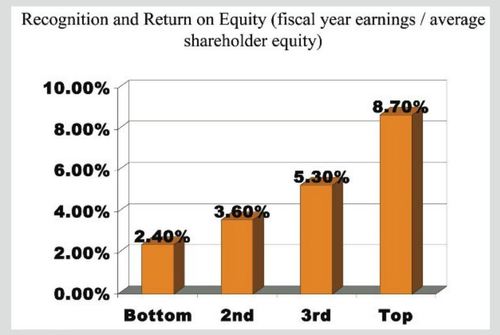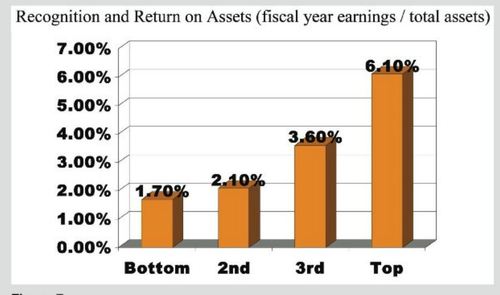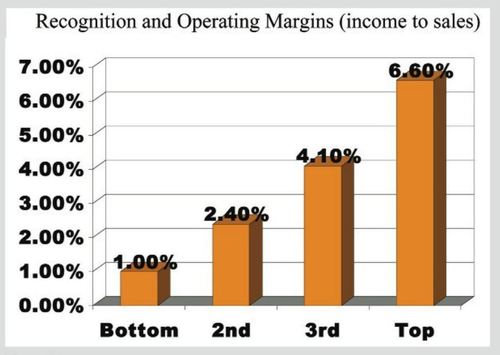
Happy employees are productive ones.
If you read our last blog on the value of recognition, you
may recall that almost 2/3rd of employees leave their jobs because
they feel underappreciated, that managers do not recognize their positive
contributions.
There is a logical assumption that any company which invests in recognition, that introduces years’ service awards, sales or safety or any of many other business reasons to reward excellent performance, will retain best employees and see superior business performance. But is this just an assumption? Is all this the speculations of a HR manager, or is there quantitative support that links recognition programs to company performance?
In fact, there is! In groundbreaking research by Chester Elton and Adrian Gostick in “The Carrot Principle”, the authors summarized data from over 26,000 employees and 31 organizations and drew some meaningful conclusions. They asked employees, actual workers and not managers, to answer the question “My organization recognizes excellence” and ranked findings into quartile responses; meaning that they grouped whether companies recognized their workers into four “buckets” from lowest to highest. So the organizations in the lowest quartile or bucket least rewarded their employees, while those in the highest quartile had the strongest, most consistent recognition. Then Elton/Gostick correlated business performance, actual financial statement business metrics, to see if there was a relationship between how much a company recognized their employees and how well the company financially performed.
Not surprising, there was a very consistent relation between how much a company recognized their employees and how strongly that company performed. Across many metrics, including return on equity, return on assets, and operating margin, the simple conclusion is companies who invest in recognition outperform those who do not. By a lot! For example, companies with little recognition, in the lowest 25%, had a ROE of 2.4% versus those companies with the highest recognition in place that had an ROE of 8.7%. Companies with limited recognition had an ROA of 1.7%; those with high levels of performance have an ROA of 6.1%. And operating margins show the same story… companies with low/no recognition have an operating margin of 1.0% versus a 6.6% margin for those companies who do recognize their workers.



Lots of numbers, and worth going through if you have any doubt that awarding your employees drives business results. An easy conclusion to accept… it is logical, intuitive, and feels right. And now there are facts that support, irrefutably, that any company that invests in recognition will better retain its best people and have stronger business performance than those that do not. And of course this makes sense: the time to recruit and retrain experienced employees who leave because they are not appreciated, would be a drain on any organization. So now that you are a believer that recognition has a return, how do you set up a recognition program? What do you recognize, how to you set up a meaningful program? That will be covered in our next blog!
Source: The Carrot Principle, Gostick and Elton.





 PREVIOUS POST
PREVIOUS POST
